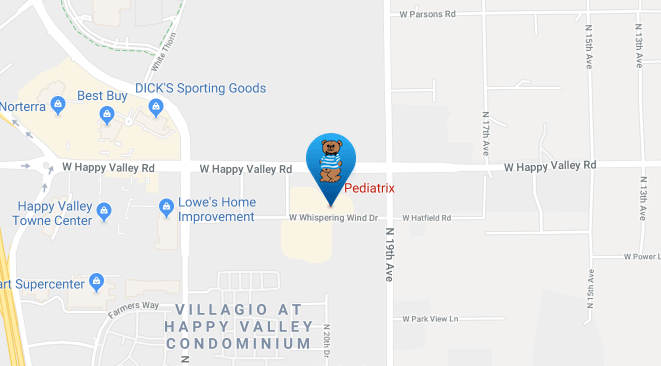Medical Record Requests
AVAILABLE FOR EXISTING PEDIATRIX PATIENTS ONLY
Medical Record Requests
Patient/Parent/Guardian Request ›
Third-Party Request ›
AVAILABLE FOR EXISTING PEDIATRIX PATIENTS ONLY
What Is It?
Circumcision is a surgical procedure that involves removal of the foreskin from the penis. The foreskin is the fold that normally covers the glans of the penis.
Purpose Of The Foreskin
- The foreskin protects the glans of the penis.
- Its purpose is to keep the glans soft, moist, and sensitive.
Risks Of Circumcision
As with any surgical procedure, there are risks involved. These risk factors are rare, but possible.
They include:
- Significant loss of blood: This can occur in normal newborns, but is usually a sign that the newborn has a bleeding disorder.
- Infection: Anytime the skin is broken, there is an entry point for germs. This can lead to infection.
- Amount of skin removed: Sometimes too little or too much skin is removed. This does not create a permanent problem, but can cause some temporary concerns.
- Unprotected penis: The circumcised penis leaves the head of the penis exposed to rubbing action of a wet diaper. This can cause the development of tiny sores around the end of the penis.
Is It Necessary?
This is a very controversial question. You can probably find pros and cons for and against circumcision. It is a medical option according to the American Academy of Pediatrics (AAP). The AAP states that circumcision is not medically necessary. According to the research, there is no statistically significant difference between a circumcised and non-circumcised penis in relation to infection, cleanliness, and cancer.
Reasons People Choose To Circumcise:
- Some religions incorporate circumcision as a ritual of faith, as in the Jewish religion.
- If a newborn boy has a father or older brothers who are circumcised, the newborn boy may be circumcised to avoid the problem of looking “different” within his own family.
“Difference”in the locker room during teenage years can be dealt with easily by rational explanation. There are now increasing numbers of boys who are not circumcised.
Circumcision is a Permanent Procedure
It needs to be an agreed upon decision by both parents. If you have specific questions or would like more information, please talk with your pediatrician before coming to a decision.
Care Of The Uncircumcised Penis
It usually is not necessary to do anything special for the uncircumcised penis. Normal bathing provides adequate care during infancy. Do not retract the foreskin – bleeding, swelling, and pain may result. Until the foreskin is retractable, normal bathing provides adequate cleansing. Most foreskins are retractable by age 3, but sometimes not until puberty. If you have questions or concerns about caring for your uncircumcised child, please let your pediatrician know.
Care For The Circumcised Penis Using The Gomco Circumcision Device
In the first 5-7 days, generous amount of Vaseline should be applied to the head of the penis at the time of every diaper change. This is to prevent the freshly exposed areas from sticking to the diaper. Some swelling and oozing of thin yellowish fluid or crusts are normal for the first 5 days or so. Extensive swelling, redness extending to the base of the penis or inability to urinate are not normal and need attention by a physician.



